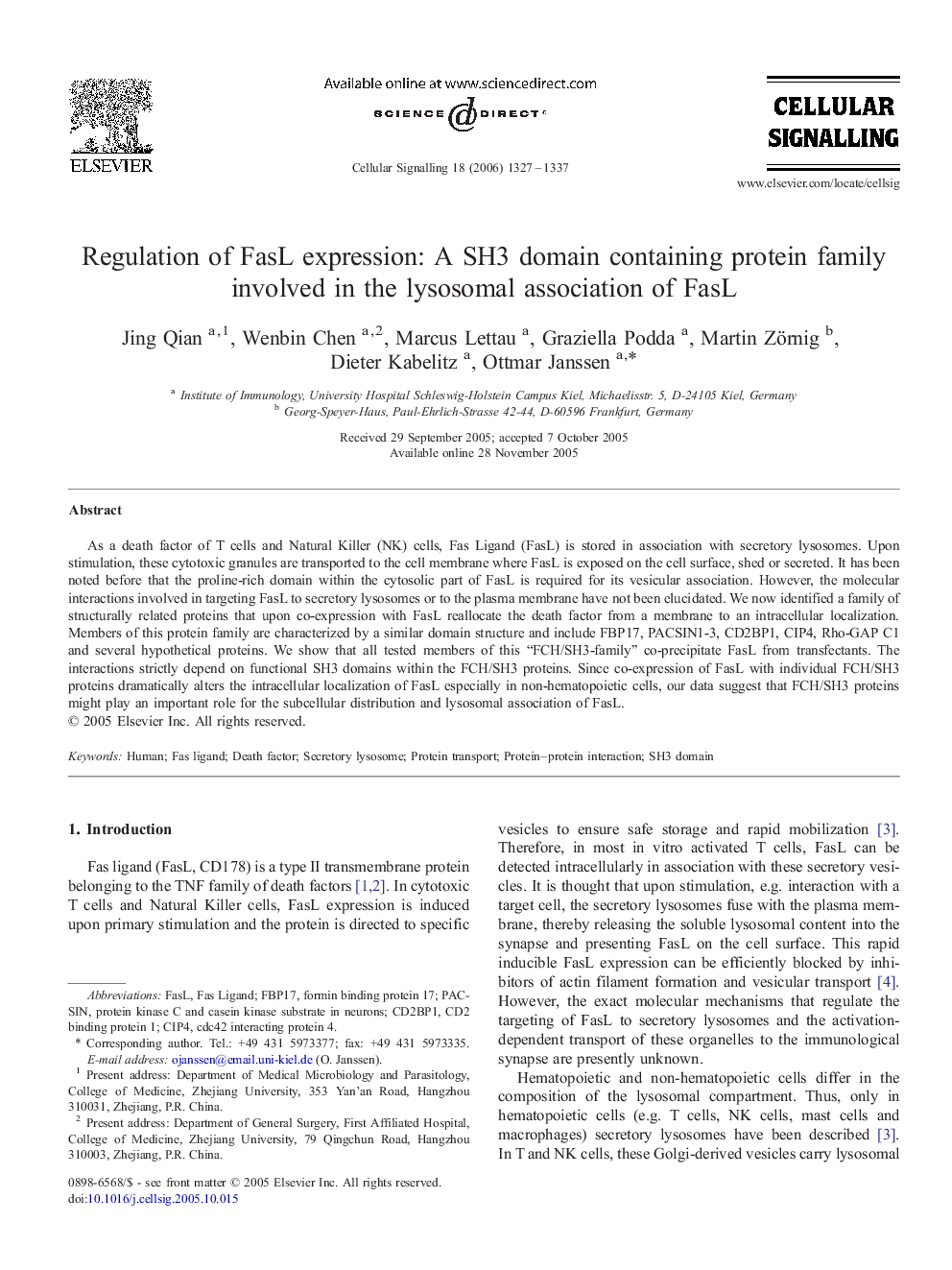| Article ID | Journal | Published Year | Pages | File Type |
|---|---|---|---|---|
| 1964979 | Cellular Signalling | 2006 | 11 Pages |
As a death factor of T cells and Natural Killer (NK) cells, Fas Ligand (FasL) is stored in association with secretory lysosomes. Upon stimulation, these cytotoxic granules are transported to the cell membrane where FasL is exposed on the cell surface, shed or secreted. It has been noted before that the proline-rich domain within the cytosolic part of FasL is required for its vesicular association. However, the molecular interactions involved in targeting FasL to secretory lysosomes or to the plasma membrane have not been elucidated. We now identified a family of structurally related proteins that upon co-expression with FasL reallocate the death factor from a membrane to an intracellular localization. Members of this protein family are characterized by a similar domain structure and include FBP17, PACSIN1-3, CD2BP1, CIP4, Rho-GAP C1 and several hypothetical proteins. We show that all tested members of this “FCH/SH3-family” co-precipitate FasL from transfectants. The interactions strictly depend on functional SH3 domains within the FCH/SH3 proteins. Since co-expression of FasL with individual FCH/SH3 proteins dramatically alters the intracellular localization of FasL especially in non-hematopoietic cells, our data suggest that FCH/SH3 proteins might play an important role for the subcellular distribution and lysosomal association of FasL.
